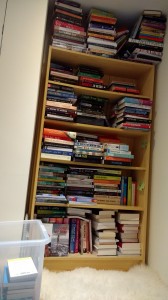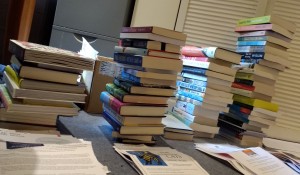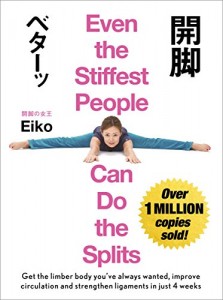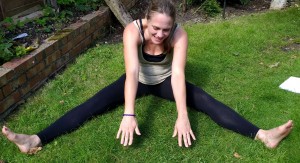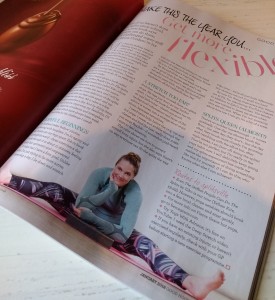A few months ago, I wrote a book in the space of a few weeks. It wasn’t a particularly long one – just 12,000 words and it wasn’t a masterwork of fiction poured from my heart through the filter of my amazing literary talent.
In fact if I had to define it, Everything You Need To Know: Kings And Queens Through The Ages is one of those fun books you give to people at Christmas and then spot in their downstairs loo months later. But hey – a book is a book.
A friend put me in touch with a new publishing company which was planning to roll out a whole Everything You Need To Know series and needed writers. I fancied a new challenge and after a couple of enthusiastic emails I had myself a tasty commission. There was one small problem – they wanted the book in three and a half weeks.
All it took was a punishing deadline and the will to ignore my family
And so I was off, researching up a storm. I spent hours in my local library scouring biographies for light-hearted trivia, trawled Wikipedia for leads then disappeared down a wondrous rabbit hole of historical blogs and academic papers. In the process I became an expert on things I’d never been remotely interested in before. I found myself watching The Crown saying things like “Of course Princess Margaret’s been on a bus” or “ooh look, it’s the Poltimore Tiara!”
And as I worked, the words just came – lining up gleefully on the page as I discovered each treasure trove of trivia. It was tons of fun. Of course when this happens it’s usually a sign that the work will need some serious editing later on but the fact remains: at the beginning of the month there was no book – three and a half weeks later, there was one.
By then I was knackered – I’d been doing all my regular freelance work alongside it so had been working until 2am for weeks – but also kind of exhilarated. Because after spending years in limbo with my own novel, tapping out the odd paragraph between commissions, I realised I could write something long-form (well long-ish), and write it fast. All it took was a punishing deadline and the will to ignore my family for set periods of time.
And so, in the weeks that followed I came to a decision. For years I’d been struggling to fit my fiction writing around the demands of a fast-turnaround freelance job, plus the needs of two small children and a raggedy, untidy house. As a result my novel has inched along slowly, sometimes lying neglected in my Dropbox for weeks. It’s time to make a change, to take a run at it like I did with Kings & Queens.
And so from the end of last year that’s what I started to do. I dropped all freelance work except book reviews – I could never give up book reviews. And while it was incredibly painful it was also a huge relief because for the first time in years I was prioritising the career I wanted.
Having time to concentrate made all the difference
A few months later, I have finished editing the manuscript of my YA crime novel, The Girl Who, and have started sending it to agents. Having the time to concentrate on this project has made all the difference. I know I’m privileged to be able to do it, that I have a husband in work who is able to shoulder the financial burden for a while – many others don’t have that luxury. It’s no wonder the world of writing is so inaccessible for so many – there’ll be a blog on this in the near future as I have a lot to say about this.
Sadly, things did not end well for poor old Kings & Queens. Despite the punishing deadline it’s now languishing in publishing no-man’s-land, like an ageing heir awaiting an abdication, as booksellers didn’t pick it up. But still, it could be the most important book I ever wrote, as it gave me the confidence to carry on.

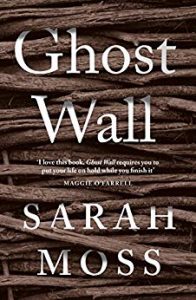 Over a thousand years ago out in the Northumberland countryside a girl was sacrificed: kicked, beaten, tortured and finally buried in the bog by her family, her friends and the people she had grown up with. How could a community turn on someone like that, and why?
Over a thousand years ago out in the Northumberland countryside a girl was sacrificed: kicked, beaten, tortured and finally buried in the bog by her family, her friends and the people she had grown up with. How could a community turn on someone like that, and why?

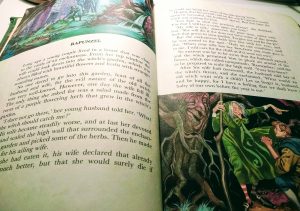 Bluebeard’s chamber was full of the corpses of his former wives, characters are blinded, torn apart by wild animals. It’s worse of course if you’re the stepmother. You could be tricked into eating the minced-up body of your own daughter, rolled down a hill in a barrel lined with nails or, if you were foolish enough to be cruel to Snow White, you could end up with your feet being forced into red-hot iron shoes and dancing yourself to death.
Bluebeard’s chamber was full of the corpses of his former wives, characters are blinded, torn apart by wild animals. It’s worse of course if you’re the stepmother. You could be tricked into eating the minced-up body of your own daughter, rolled down a hill in a barrel lined with nails or, if you were foolish enough to be cruel to Snow White, you could end up with your feet being forced into red-hot iron shoes and dancing yourself to death.
 creatures from her grandmother’s tales might not be fictitious after all.
creatures from her grandmother’s tales might not be fictitious after all.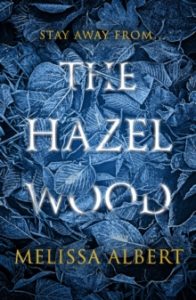 It’s a hugely accomplished book for a debut author, beautifully written and atmospheric. The heroine is tough, scrappy and flawed – although her anger issues are more talked-about than experienced, it would have been fun to explore them more. I had a bit of a crush on her sidekick, Ellery Finch. I’m not at all surprised that the film rights have been sold already.
It’s a hugely accomplished book for a debut author, beautifully written and atmospheric. The heroine is tough, scrappy and flawed – although her anger issues are more talked-about than experienced, it would have been fun to explore them more. I had a bit of a crush on her sidekick, Ellery Finch. I’m not at all surprised that the film rights have been sold already.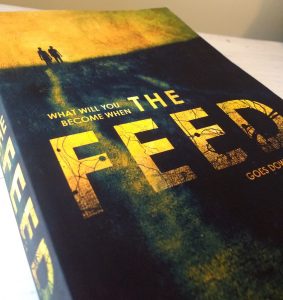 This is a fantastic Black Mirror-esque idea for a tale and the hook dragged me in straight away, but at first I did find the book a little frustrating. I wanted to know more about the Feed and the mysterious Taken people and less about the post-apocalyptic mess which followed its collapse. And I couldn’t quite warm to Tom and Kate, the nice middle class couple caught up in it all as they search the countryside looking for their missing daughter. I also didn’t truly buy into the idea that almost everyone on the entire planet – rich and poor, developing and developed world – had the feed in their brains. What about the underclass who could never afford it – they’d really come out on top in this world… But that’s probably another story.
This is a fantastic Black Mirror-esque idea for a tale and the hook dragged me in straight away, but at first I did find the book a little frustrating. I wanted to know more about the Feed and the mysterious Taken people and less about the post-apocalyptic mess which followed its collapse. And I couldn’t quite warm to Tom and Kate, the nice middle class couple caught up in it all as they search the countryside looking for their missing daughter. I also didn’t truly buy into the idea that almost everyone on the entire planet – rich and poor, developing and developed world – had the feed in their brains. What about the underclass who could never afford it – they’d really come out on top in this world… But that’s probably another story. month teeming with twisty tales. It’s a brilliantly original idea: in the 1980s a gang of kids use chalk figures to communicate with each other. It’s all innocent, although somewhat creepy-looking fun until the day the chalk figures lead them to a body hidden in the woods. Thirty years later the gang has moved on, but has to confront the past when the figures start appearing again…
month teeming with twisty tales. It’s a brilliantly original idea: in the 1980s a gang of kids use chalk figures to communicate with each other. It’s all innocent, although somewhat creepy-looking fun until the day the chalk figures lead them to a body hidden in the woods. Thirty years later the gang has moved on, but has to confront the past when the figures start appearing again…

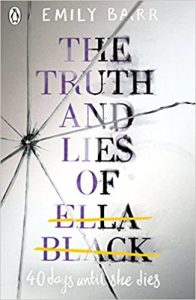 Ella Black is a good girl, to the point of boring. She studies hard, she keeps her head down and the craziest thing she’s ever done is dye her hair purple. But the reason she’s so good is that she has an alter-ego – the violent, destructive Bella. The first time Bella makes an appearance she does something so shocking I almost dropped the book and it’s clear why Ella needs to keep on the straight and narrow and keep Bella under control.
Ella Black is a good girl, to the point of boring. She studies hard, she keeps her head down and the craziest thing she’s ever done is dye her hair purple. But the reason she’s so good is that she has an alter-ego – the violent, destructive Bella. The first time Bella makes an appearance she does something so shocking I almost dropped the book and it’s clear why Ella needs to keep on the straight and narrow and keep Bella under control.
 rolling in late and taking Mondays off sick. It explained all the mysterious bumps and bruises and injuries. It explained why the features team used the words “totally Cathed” as a euphemism for steaming drunk. And now I understood why, on our way out of a work Christmas party, I’d had to stop Cath jumping into a limo full of men on a stag.
rolling in late and taking Mondays off sick. It explained all the mysterious bumps and bruises and injuries. It explained why the features team used the words “totally Cathed” as a euphemism for steaming drunk. And now I understood why, on our way out of a work Christmas party, I’d had to stop Cath jumping into a limo full of men on a stag.